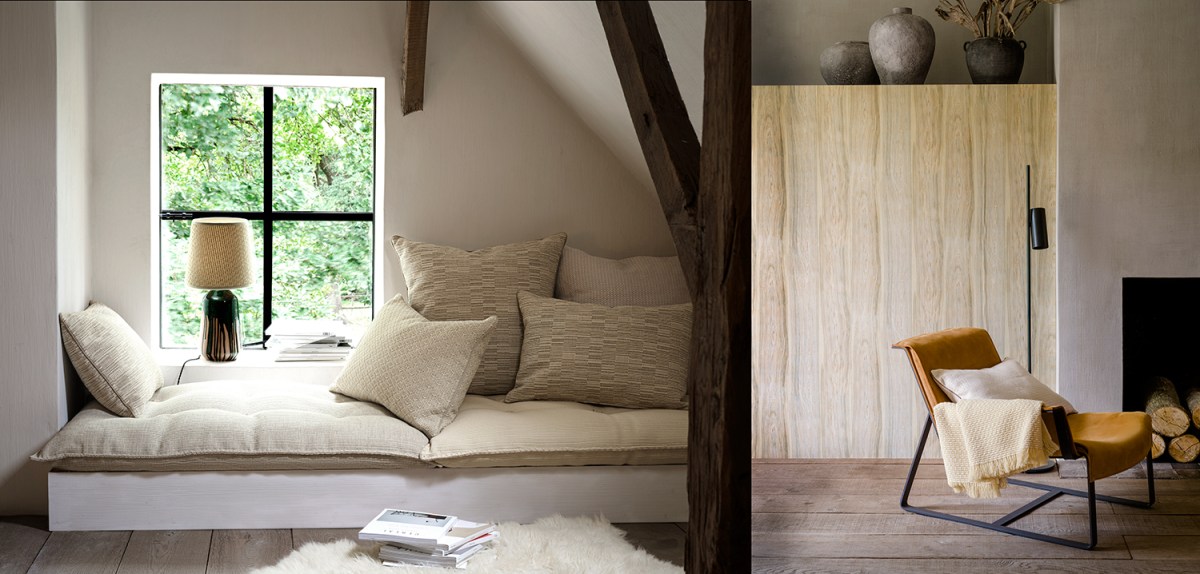Design and Sustainability
August 17, 2023
Sustainability is the word on everyone’s lips and it’s no different in the world of interior design. Our recent work with suppliers has only served to highlight just how much the industry and the brands within it are reshaping and revising the way they design, produce, and engage with products in order to meet market needs without compromising the planet in the process.
We’ve been inspired to learn about the new technologies and innovations our favourite brands are pursuing, and to be educated in ways that we are incorporating into our schemes and design practices within the studio.
Every product, through it’s production and dissemination leaves a mark and nowhere is it more obvious than in the design industry.
From the sourcing of the raw material, it’s journey to the mill, the mechanical and chemical processes – each component has its own impact on the world we live in.
To be sustainable, it’s key that designers look for more local and ethical ways of producing their products as well as factoring longevity into the quality they produce, avoiding quick replacement and fad buying. And then? Well, it’s up to us, as designers and consumers, to make our decisions in the same way. Choosing long lasting stain resistant, fade resistant fabric, means your scheme will stand the test of time.
As us about the sustainable collections we carry. We’re making every effort to design using the best sustainability options around us and we’d love to share our tips with you.
The circular economy goes further than simply recycling. It drills deeply into the ‘take, make, waste’ cycle we all live in and promotes ways of producing and consuming that keep an item and its materials in use for as long as possible. But what does that mean for consumers? When it comes to interiors, it’s all about making good choices. Integrating recycled fabrics and antiques into your scheme is a good start. Then we can consider breathing new life into items we already own or that are already in circulation in the
design market.
Then there’s the potential impact we can make if we make informed, sustainable decisions when it comes to the materials we choose to work with. Flax and linen are our go-to options due to their lower environmental impact. And now that we’re moving into the winter, we’ll be building in cosy blankets, bedding, and curtains which will all help to retain heat. Making small changes by choosing locally produced, recycled fabrics made in the UK and Ireland with low or zero chemical inputs, can really alter the impact of any home. Bear in mind that these fabrics will necessarily be available in duller colours, using natural dyes which have a lower environmental footprint.
Our sustainability heroes
We work with many designers when we’re putting together our schemes and projects and there are some in particular that stand out as making inspiring strides towards their sustainability goals.
With fibres coming from globally diverse sources and the technical processes they undergo, sustainability in fabric and textiles can be an environmental mine field. Pierre Frev’s Nate Cru portfolio of books tackles this head on with fabrics sourced much closer to home. In particular they’re luxurious wools from a free roaming flock of sheep in the French Alpes, the shepherd known personally to Patrick Frey. Working direct with source and supporting local means everything to this collection. The colour of these fabrics has been excluded, with no chemical dyeing used at all. Only natural shades of ivory, cream, beige and white give the collection a beautifully natural pared back look. These fabrics bring luxury through layer upon layer of texture and interest without strong jolts of colour.
We’re seeing a huge trend towards recycled plastic fabrics and rugs and the mission and designs of Jennifer Manners collection really stand out to us. The collection ‘re/purpose’ is made using discarded polyethylene components that would otherwise be finding their way to landfill or oceans. Using a process of heat and water (itself recycled) to create surprisingly soft and robust yarn, the qualities of plastic fibre mean the finished products offer even greater durability, resisting accidental spills and fading as well as being bleach cleanable. Taking 6500 plastic bottles to make a 2m x 3m standard sized rug, the collection has drawn attention from industry experts awarding it ‘Best Sustainable Product’ at Decorex 2019 & The English Home Magazine’s ‘Editor’s
Choice’
A brilliant team who have fully embraced sustainability launching their new Pimlico studio earlier this year made almost completely out of recycled materials. De La Cuona also launched their first sustainable collection of luxury fabrics earlier this year and have added to it already with Pure Edition II, an all organically produced 100% linen collection in soft luxury neutrals. We applaud De La Cuona’s efforts especially learning of the intense and demanding process that is involved in proving the credentials to be a ‘sustainable’ product.
Another great example of a brand who are design conscious but also savvy in putting an emphasis on natural materials to manufacture their latest collection UTOPIA. Their chosen material hemp, uses a quarter of the water linen or cotton needs to grow. Tt is in fact the oldest cultivated plant and Hodsoll McKenzie make great use of it in their effortlessly idyllic recent collection.